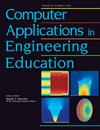A Monitoring Tool for the Evaluation of Program Outcomes in Engineering Education
Abstract
During the evaluation process, organizations that accredit engineering programs determine whether a program meets a list of predetermined criteria. One criterion on the list is Program Outcomes (POs). The most common weakness statement is found in this criterion. First, we aim to develop a model that can support program evaluation during the accreditation process. Second, the proposed approach can be used as a feedback tool in the continuous improvement of teaching in engineering programs. The course instructor runs the first module, which predefined learning outcomes and the POs are linked together using an Excel-based software for each activity performed in the course. The second module calculates the scores that reflect the achievement levels of the POs for the whole program. The scores from individual courses are simultaneously transferred to the Technique for Order Preference by Similarity to Ideal Solution module that determines the rating scores of the POs in the program. The proposed system shows which POs are at a satisfactory level and which are lagging behind and need attention. It helps the course administrators to manage the course material proactively. The proposed system is a powerful tool for monitoring and tracking POs, and it is the primary tool used by program administrators to improve the program continuously. It is particularly useful in identifying the weak spots of the program. The successful implementation of the system in our department since 2012 makes us confident that the system could be adopted by other engineering programs.

 求助内容:
求助内容: 应助结果提醒方式:
应助结果提醒方式:


